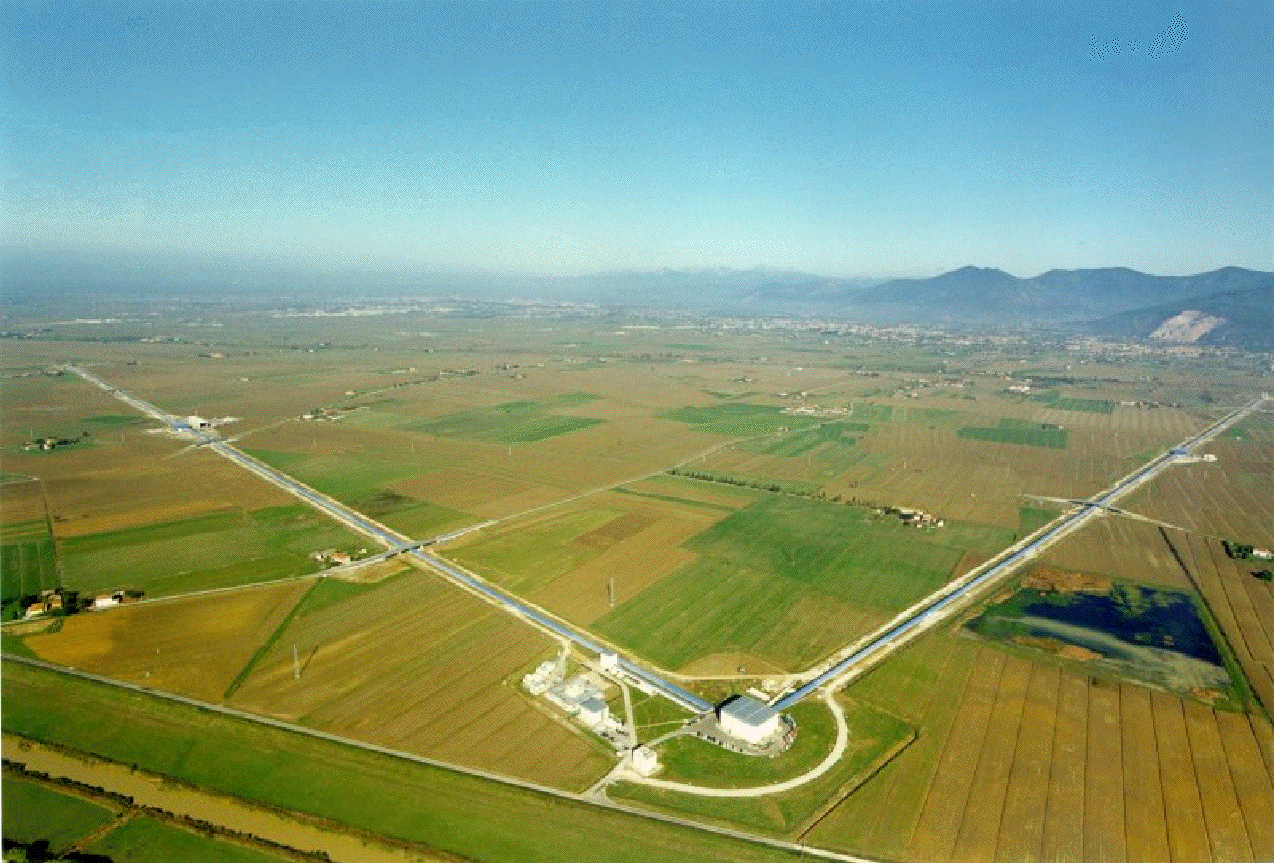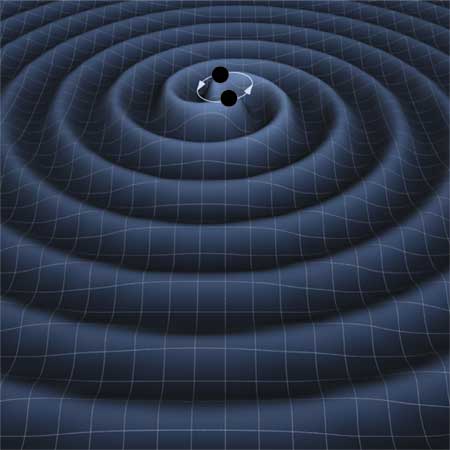Gravitational
waves (GW) correspond to changes of the metric properties of the space
that propagate through the universe at the speed of light. Nowadays,
their direct detection has become an important challenge in physics, as
it will allow to thoroughly test the Einstein's General Relativity and
open a new window on the Universe with implications in astrophysics and
cosmology.
-
Given
the importance of the scientific and technological developments, the
challenge of their experimental detection is tackled by a worldwide
network of detectors. It comes in three complementary approaches in
terms of spectral coverage: ground based interferometers (Virgo,
LIGO, etc..) from 10 Hz - 10 kHz ; in space, with eLISA/NGO
, which covers from a few mHz to a fraction of hertz; and the pulsar
timing arrays, covering the very low frequencies (~ nHz). A first
generation of detectors, operating a few years ago, validated the
technological and instrumental choices, demonstrating high precision
metrology. From 2016, it will give way to a second generation with a
sensitivity ten times better, probing a volume of universe a thousand
times larger and leading (probably) to the first direct detection of
gravitational waves.
Among
the sources of gravitational waves, violent astrophysical events
(mergers, gravitational collapse) involving compact objects such as
neutron stars and black holes, may be accompanied by electromagnetic
radiation and particles (neutrinos, in particular) at high energy. The
observation of an electromagnetic counterpart (optical, X-ray, gamma,
radio...) and neutrinos (low or high energy), could then be a crucial
ingredient to identify the astrophysical origin of the GW signals.
-
This
prospect justifies a "multi-messengers approach", which consists in
correlating the GW detectors with other observational methods. Such a
strategy requires cooperation with optical telescopes designed for
quick follow-ups on a "robotic" opportunistic mode, and with the
projects of wide field transient surveys in the radio frequency band (LOFAR), or optical/near-infrared (LSST). At higher energy, a good synergy also exists with the search for gamma-ray bursts, via Fermi or Swift, and the Sino-French mission SVOM. In the neutrino spectrum, work has been initiated with ANTARES and and can be extended naturally to the future European KM3 neutrino detector.
CNRS is heavily involved in ground based detectors with Virgo.
The first generation has demonstrated the feasibility of these
experiments through scientific runs at the expected sensitivity and,
for lack of detections, has established interesting astrophysical
limits on sources. It also gave the opportunity to operate the various
detectors as a network and to take the first steps toward a
multi-messenger astronomy involving gravitational waves. The second
generation, due to come online in a few years with a 10-fold increase
in sensitivity (Advanced Virgo, Advanced LIGO...),
offers rich prospects and the promise of true gravitational astronomy.
In the longer term, the third generation European project, the Einstein
Telescope (ET), will allow us to probe the Universe in depth. ET is one of the "Magnificent Seven", the projects recommended by the ASPERA network for the future developments of Astroparticle Physics in Europe.
For reasons of
efficiency, gravitational wave science is a global effort. Extracting
information on GW sources requires several interferometers operating
simultaneously on different sites. The scientific communities in the
United States (LIGO), Germany - United Kingdom (GEO600) and Italy - France and the Netherlands (Virgo)
share technologies, R&D and theoretical advances, as well as data
analysis methods. The European project ET will help improve this
cooperation around the world.





